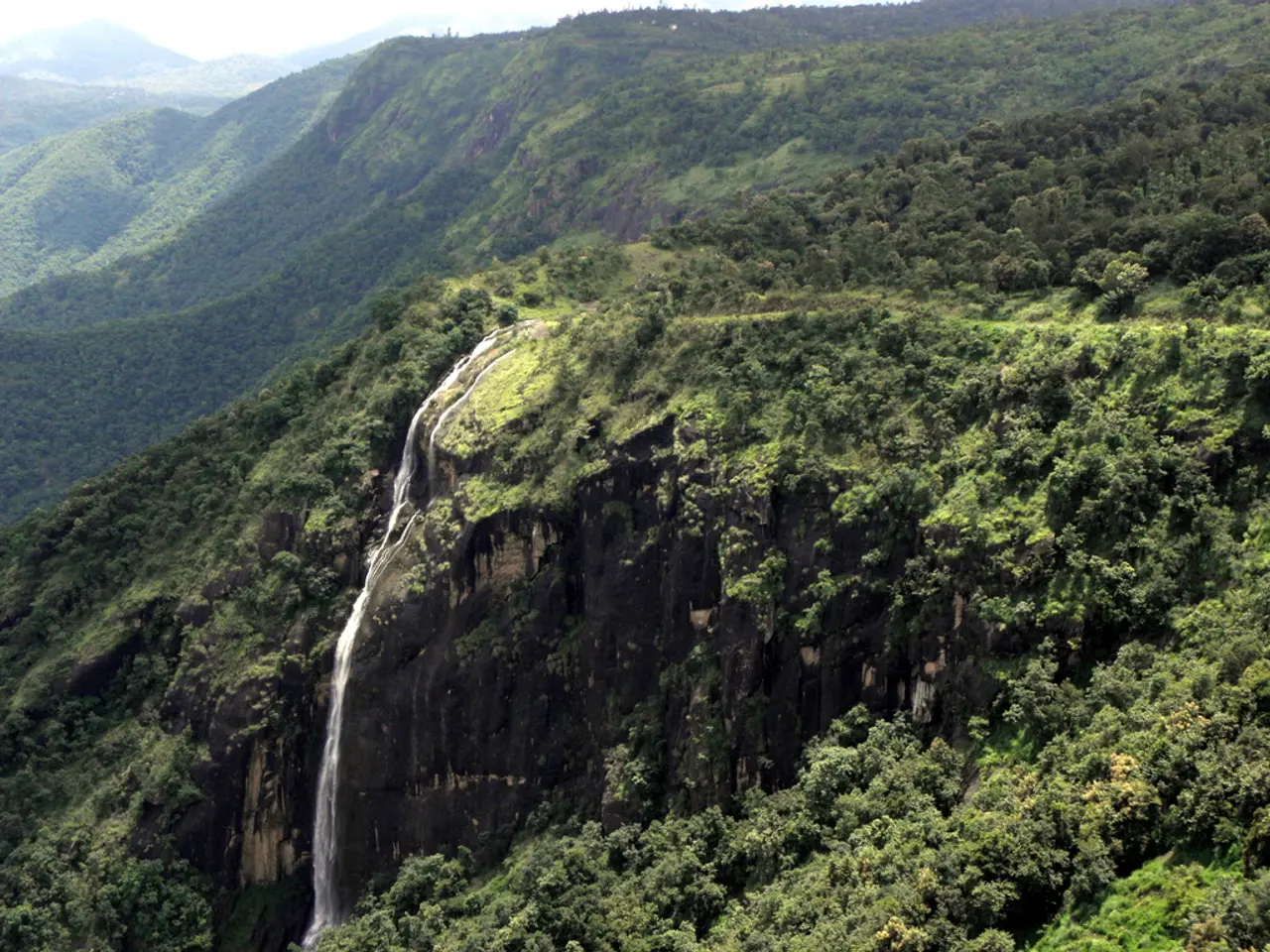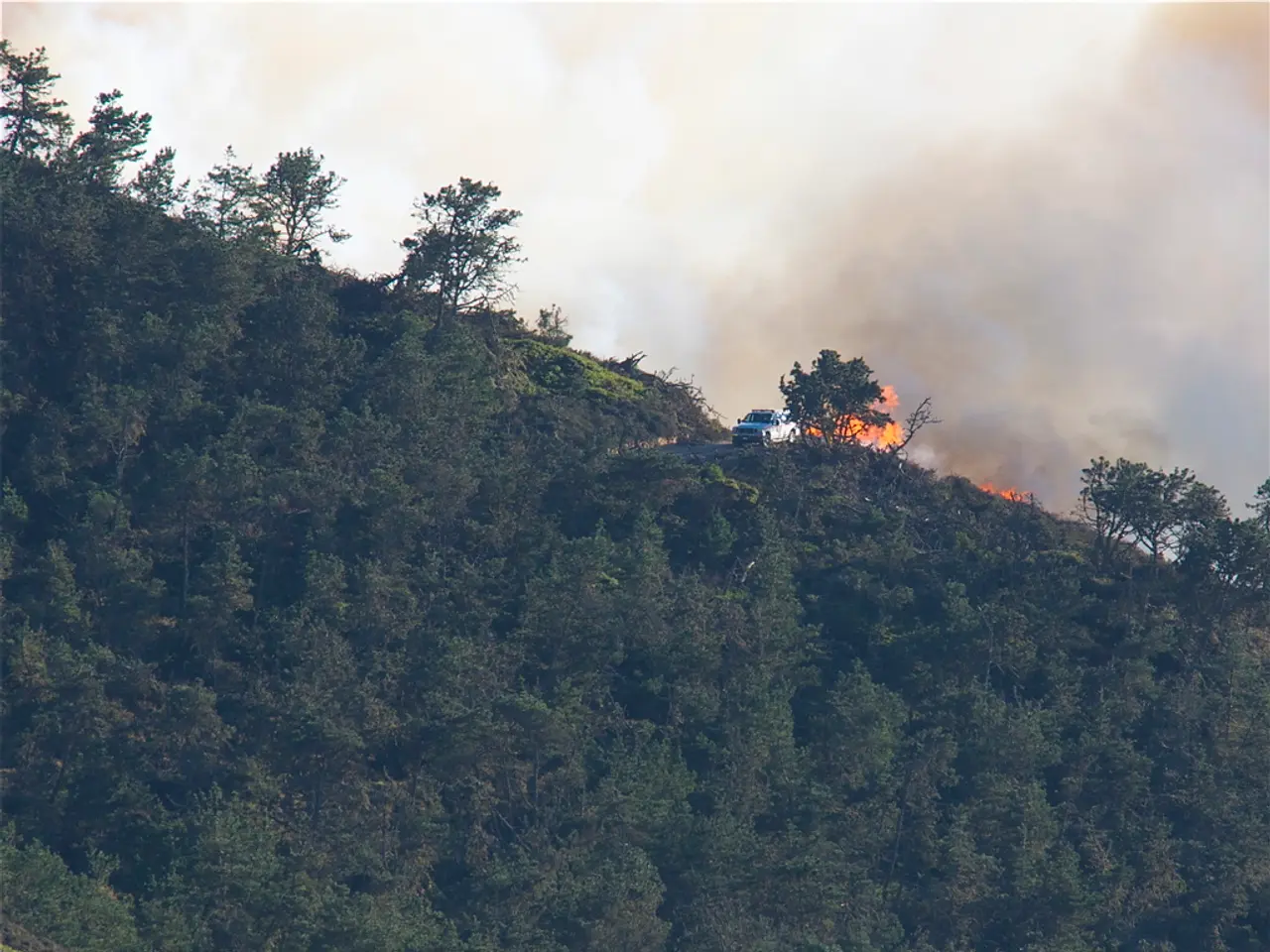Historic torrential rainfall is forecasted by Japan's meteorological department
Heavy Rain and Flooding Displace Over 3 Million in Southern Japan
In the Kagoshima and Miyazaki regions of southern Japan, an unprecedented amount of rainfall has led to historic evacuations, severe flooding, and landslides. The heavy rain has caused a record-breaking 500 millimeters of rainfall in 24 hours in Kagoshima prefecture, resulting in dangerous flooding and landslides, with evacuation advisories issued and emergency warnings at the highest level.
Neighbouring Miyazaki prefecture is also facing threats from ongoing heavy rain, as the Japan Meteorological Agency (JMA) forecasts continued rainfall worsening through the weekend. The agency urges residents in low-lying and vulnerable areas to evacuate immediately without waiting for official orders.
Currently, over 3 million people across southwestern Kyushu, including Kagoshima and Miyazaki prefectures, are under evacuation advisories or warnings due to severe flooding and landslide risks. The Fire and Disaster Management Agency reported that some 384,000 residents, mainly in Kumamoto prefecture but impacting adjacent regions, face the most serious evacuation warnings. Rivers have overflowed, roads and houses have been damaged, and several people have gone missing or been swept away by floodwaters and mudslides.
The JMA has issued its highest-level heavy rain emergency warnings in affected areas, highlighting the life-threatening situation and urging maximum vigilance throughout the region served by Kagoshima and Miyazaki. The heavy rain in Kagoshima and neighbouring prefectures is part of a larger widespread storm system currently impacting southwestern Japan, with no immediate easing in sight as rainfall is expected to continue through at least the weekend of August 2025.
Authorities are actively conducting rescue operations and emphasizing immediate life safety actions due to the extreme and unprecedented nature of this rainfall event in southern Japan. Several houses in the region of Aira, Kagoshima, have been damaged, with a house destroyed by a landslide in the city of Aira. Around 530,000 people in Kagoshima and the neighbouring region of Miyazaki have been advised by the disaster management agency to seek safety.
The severe rainfalls in Kagoshima are unprecedented, according to the weather agency, following a heatwave in large parts of Japan. A new record high of 41.8 degrees Celsius was set in Japan this week during the heatwave. Japanese authorities have urged more than half a million people in the southern part of the country to leave their homes or take other precautions due to life-threatening rain.
In an effort to keep residents safe, the weather service has issued the highest warning level and warned people not to wait for instructions from local authorities and to move away from rivers and ravines. Two people were rescued in Aira, Kagoshima, but one presumed resident is still missing. The reported landslide occurred in an area already affected by life-threatening rain.
Residents are urged to stay alert and evacuate early if advised to ensure their safety during these challenging times.
In this situation, the community in the affected regions of Kagoshima and Miyazaki is advised to review and adhere to the community policy regarding evacuation procedures due to the persistent heavy rain and flooding. The vocational training centers in the area should also consider providing temporary shelter and evacuation assistance to disaster-affected residents if possible.
Meanwhile, the weather-forecasting agencies, such as the Japan Meteorological Agency, are working tirelessly to predict the continue rainfall patterns and intensities, aiming to help residents make informed decisions and stay safe until the storm passes.








